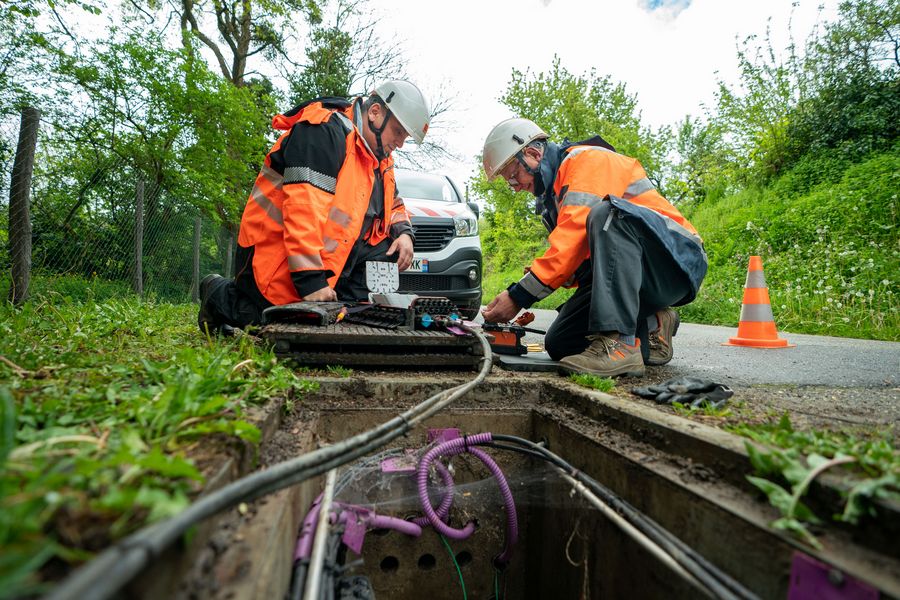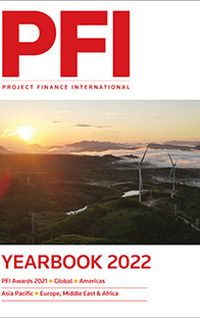Orange’s Polish subsidiary has raised an approximately €650m local currency debt package backing its fibre rollout and taking it off balance sheet. The company is looking to gain a head-start in Poland, where fibre connections are still sparse. By Jordan Bintcliffe.
French telecoms company Orange’s Polish subsidiary Orange Polska and Dutch pension fund APG have this year closed a Z3bn (€653m) plus Polish zloty non-recourse debt package backing the roll-out of fibre to 1.7m households in Poland. Orange Polska sees fibre as being core to its convergence strategy, where it aims to bundle multiple services together for its customers. Internet penetration is around 62% in Poland versus 80% in the rest of the EU, giving the company plenty of space to gain a foothold in the fibre sector.
Warsaw-headquartered Orange Polska is aiming to build an open network while targeting low and medium-density areas to gain both retail and wholesale customers. In October 2020, Orange kicked off the financing process of finding a funding partner for the rollout, sharing an information memorandum with interested parties. APG won out against other bidders including Japanese bank SMBC’s equity investment arm and Vauban Infrastructure.
Orange’s 50%-owned Polish subsidiary Orange Polska set up a stapled financing with Santander backing the rollout. Dubbed Project Nebraska, Orange aimed to finance the deal off the company’s balance sheet in a fibreco special purpose vehicle – Swiatlowod Inwestycje (SI).
Santander led a lender group underwriting the facility. Initially, four banks were mandated – Santander, BNP Paribas, ING, Societe Generale, and the European Investment Bank (EIB). Lenders including KfW IPEX, mBank, Bank Pekao, PKO BP, BGK Bank and Raiffeisen Bank International joined through a syndication process. The EIB took a Z600m ticket, although the other lender amounts were not disclosed.
The package includes a Z3bn term loan for the rollout and a Z150m revolver that will finance working capital. It is structured as a hard mini-perm financing with both tranches maturing after seven years. The floating debt is based on the three-month Warsaw interbank offered rate (Wibor) with a margin on top, according to Jacek Kunicki, Orange Polska’s CFO. The debt facility has a cash sweep of a relevant percentage in years six and seven, with the loan terms encouraging refinancing, he said.
Orange Polska and APG will commit Z300m of equity each between 2023 and 2026. The deal values the fibreco at Z2.75bn on a debt and cash-free basis. APG paid an initial Z887m on closing with the remaining Z487m between 2022 and 2026 conditional on the delivery of the network.
Orange Polska aims to complete the rollout by 2025 and is guaranteeing network construction within a fixed budget. Orange Polska at the beginning of July transferred 672,000 fibre-to-the-home (FTTH) links to SI as part of the deal. SI will gain wholesale access to more than 170,000 Orange Polska customers.
APG is taking a 50% stake in SI, although Orange Polska will have the option to buy about 1% of the JV company and gain control in 2027–2029. Orange Polska recorded a one-off gain of Z1.6bn as a result of the transaction. The deal reached close on October 21. Orange Polska was advised by Santander on the finance package and by Lazard for the transaction with APG. The company received legal advice from Linklaters. Lenders were advised by Norton Rose Fulbright. Freshfields Bruckhaus Deringer advised APG.
The deal enables Orange to bundle faster fixed connections with mobile services while reaching customers in low-density areas. Orange’s Polska’s strategy is to move towards convergence, “which means providing the customer with a comprehensive but simple offering that includes fixed connectivity in a bundle with a mobile connection”, Kunicki said. “This is something we’ve been experimenting with and implementing for quite some time, and the rest of the market is now realising this is the natural progression for telecoms.”
Fibre is one part of the plan but convergence will require good mobile connectivity on the 4G and 5G fronts. The company aims to expand its reach in the fibre market while simultaneously investing in upgrades to its mobile network. This will provide greater flexibility needed ahead of Poland’s planned 5G auction, the timing and conditions of which are yet to be released to market participants. Originally planned to take place in 2020, in early December the 3.5GHz spectrum auction was put back once again. It is now expected to take place in 2022.
Orange Polska has self-financed the build-out of fibre since 2015, gaining 900,000 customers since then. The company has a wider customer base of 5.6m households connectable with fibre as at the end of September.
“Our goal is to continue to expand and grow revenues based on convergence, and that requires more fibre connections and a bigger footprint,” Kunicki said. “We would like to extend the footprint from 5.6 million to seven or eight million households within our reach.” Orange Polska aims to reach the target of eight million households in 2024.
The open network structure will enable Orange Polska to sell use of the network to wholesale clients. Parent company Orange will pay to use the network, although the deal doesn’t have an anchor tenant in the classic sense, according to Kunicki, as Orange doesn’t have a volume commitment or a minimum guaranteed level of services that it will buy. There were no conditions from the lenders with regards signing tenants, he said.
“We were transparent on explaining the business model. It was obvious that Orange Polska will be an important client but not the only client,” Kunicki said. As the areas targeted are low or medium density, there is little economic incentive for other players to enter and overbuild.
“From the fibreco perspective it doesn’t make a difference if there’s more connections from Orange or Iliad, because essentially the prices will be the same commercial terms for everyone and there’s a very low chance that someone else will decide to build their own network in the area,” he said.
Other operators will be able to rent its use as they enter low and medium-density areas. SI is beginning to sign the first wholesale customers on and has so far signed an agreement with T-Mobile Polska, Kunicki said. He is confident that competitors Iliad and Polkomtel will also join.
That pendulum swings both ways and Orange Polska expects to likewise benefit from renting other operators’ networks. Of the company’s existing footprint of 5.6m households, 34% of those connections are not owned by Orange. This figure was boosted substantially in the third quarter as around 700,000 households were moved over to SI.
“What we wish to do is both use our own financing capabilities to build fibre by ourselves ... but also we want to rely more and more on getting access to fibre infra that has been built by other parties,” Kunicki said. “This is definitely something that is economically justifiable for those areas where infrastructure is open for competition and there is no need to overbuild, and it allows us to focus our resources in the next three to four years much more on 5G rollout and other investments on the mobile front.”
“It’s an occasion to monetise our capabilities to deploy fibre, manage this kind of network, and also an opportunity to share the risk and rewards from this enterprise with a financial partner.”
Kunicki expects that SI will be able to achieve double-digit penetration very quickly, he said, of up to 40% in low density areas in a relatively short time.
Orange Polska reported Z2.885bn in revenues for the third quarter, a 3.3% gain against the same period of 2020. Ebitda after leases (Ebitdaal) was Z791m, a 6.6% improvement against the same time last year. That was driven by strong performance of core telecom services such as convergence, mobile and broadband-only customers. Fibre is a key driving force for performance in convergence, CEO Julien Ducarroz said on the third-quarter earnings call.
Orange Polska reported net income of Z1.586bn in the quarter, boosted by the Z1.421bn one-off gain (net of tax) related to the sale of its 50% interest in SI. That marks a 29.9x multiple against the third quarter of 2020, when net income came in at Z53m. Besides the impact of the one-off benefit from the sale, net income of Z165m benefited from growth in Ebitdaal and lower depreciation.
Demand for fibre continues to be strong, with the company adding 53,000 fibre customers in the quarter, equivalent to growth of 33% year-on-year. It’s customer footprint grew by 232,000 to 5.6 million households that are connectable with fibre as at the end of September.
Orange is the main shareholder of Orange Polska with other holders including Nationale-Nederlanden Open Pension Fund with just over 5% and nearly 45% as free float, listed on the Warsaw stock exchange.
With the fibre deal wrapped up, Orange Polska can look at other ways of creating value for its shareholders. Next up will be a focus on its tower assets. Parent company Orange in recent months created a subsidiary, Totem, to manage the telco’s mobile towers in France and Spain. Totem’s passive mobile infrastructure portfolio included more than 26,000 sites across the two countries as of the start of November. Orange Polska could participate in the Totem project, Kunicki said on the company’s half-year call, although no decisions have been made yet.

To see the digital version of this report, please click here
To purchase printed copies or a PDF of this report, please email gloria.balbastro@lseg.com

















